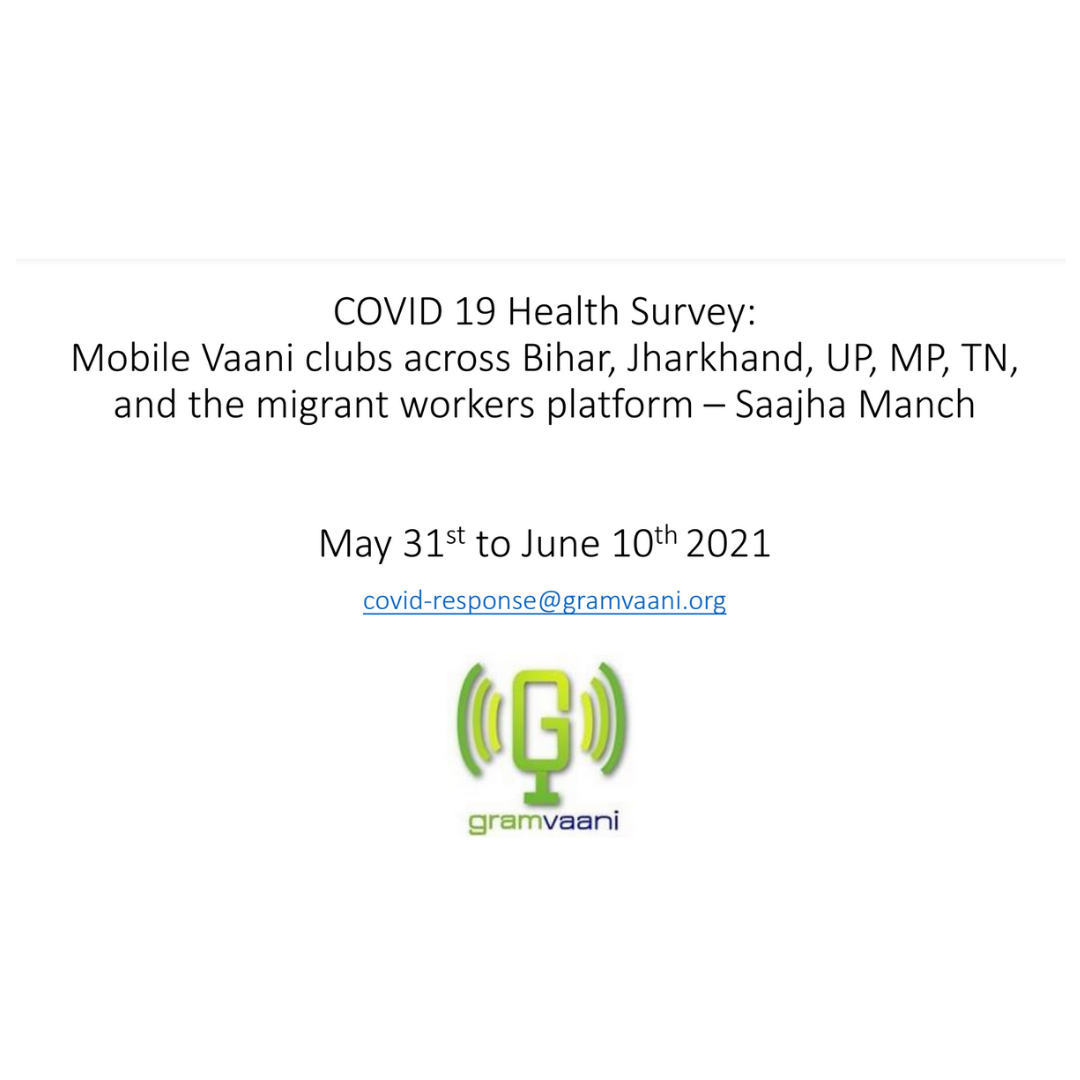Results from our health survey are now available, to understand the context of how people in rural areas, and migrant workers in urban areas, handled the second wave:
- More than 40% of the people reported COVID like symptoms. Testing was however difficult for people to get done.
- In the case of symptoms like fever, cold and cough, people prefer to rely on institutional medical services like hospitals and MBBS doctors, but there is still a large section of almost 35% people in most states who rely on home remedies and informal local medical practitioners.
- 28% people reported that PHCs or COVID center are at a distance of more than 5 km, making it hard for them to travel.
- 25% said that in case of a medical emergency, ambulances are available. 29% however said that they need to rely on their own vehicles, followed by 27 percent who said that they take the services of rickshaws, autos or E-rickshaws.
- 51% respondents said that they do not have a separate space at home to isolate people in case any family members are infected. This raises the need for COVID care centers within villages where people can isolate themselves if needed.
- FLWs like ASHAs conduct home visits to survey people on basic health indicators linked to COVID. With the exception of Tamil Nadu and UP, a majority of respondents from all the other states, and migrant workers, said that FLWs had not visited their homes.
- Most respondents across states indicated that they would like to do phone consultations with doctors if possible, and also discuss other doubts related to their fear of getting vaccinated.
- People were asked about what support additional support would they need to handle any COVID related complications in their homes. The top need identified by the respondents was the availability of doctors close to their homes or at panchayats, along with free testing facilities that gave quick results. Vaccination, medicines, oxygen support, and ambulance services, were other needs identified by people.
- The mortality rate was high during the second wave. 50% respondents said that there has been no deaths in the past one week while 22% said that 2-5 COVID related deaths took place in their respective villages.
The survey highlights the heath infrastructure gaps that are continuing to contribute to the slow vaccination and other health related issues being faced by people. This is apparent from the various reports shared earlier by our teams.



